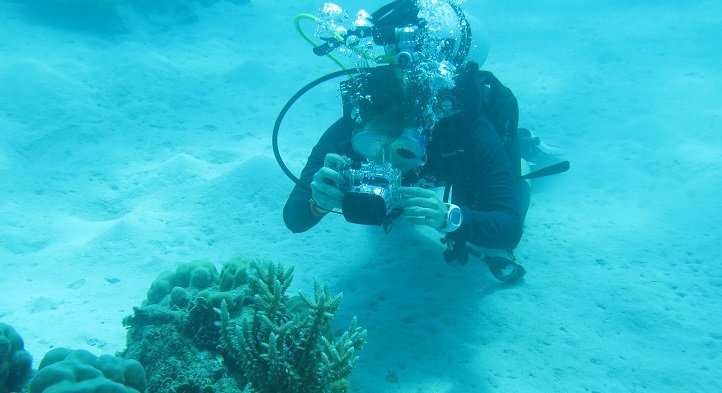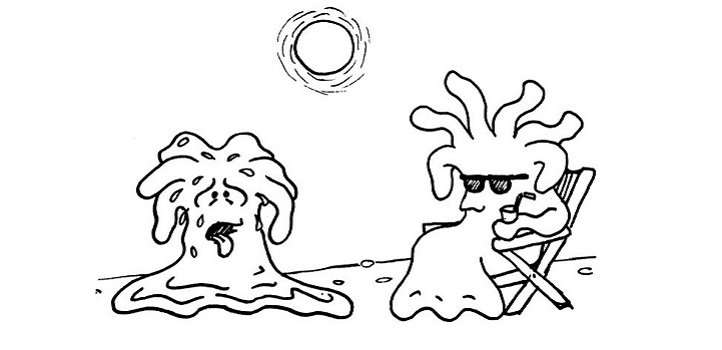Maha Cziesielski is part of a team investigating the role of symbiotic algae in coping with temperature, which will help with planning conservation efforts. Credit: KAUST
A core set of heat-stress-response genes has been identified in anemones in a study that also highlights the role of symbiotic algae in coping with temperature, an important revelation for planning conservation efforts.
Researchers from KAUST'sRed Sea Research Centerprofiled gene transcripts and proteins expressed by sea anemones—three strains of the model organismAiptasia pallida—from locations that experience different temperatures throughout the year: North Carolina, Hawaii and the Red Sea.
The research team found significant differences between a strain's transcriptome and proteome at the baseline temperature and even more pronounced differences in their heat-stress response. This is in line with recent findings that transcript and protein profiles don't always match, highlighting the need to study both responses.
The team identified a core set of 170 responsive genes in all three strains, many of which were related to coping with oxidative stress. As expected, anemones from the Red Sea had the best heat tolerance and also expressed more oxidative stress genes. However, by comparing different strains at the same temperature rather than the effect of different temperatures on a single strain, the researchers discovered that strongest expression of oxidative stress genes was in the North Carolina strain. "This was a big surprise because it showed us that the Red Sea strain itself didn't actually have the best capacity to respond to oxidative stress," says Maha Cziesielski, the study's lead author.
The symbiotic algae that live in the anemones drive the heat response patterns seen in the coral host. Credit: Sebastian Schmidt-Roach
Until now, molecular studies have focused only on the anemones. When the team tested the symbiotic algae that live in the anemones, they found that the symbionts drove the response patterns seen in the hosts. The Red Sea symbiont produced the least reactive oxygen, which causes oxidative stress. "So even if all three strains had the same antioxidant capacity, the Red Sea strain would probably cope best, simply because overall it would have less exposure thanks to the symbiont," says Cziesielski.
"Transcriptomic data can give us really great insight into important changes in regulatory mechanisms," says Cziesielski, "but we need to validate these at the physiological level because that's what really tells us about the organism's capacity to respond."
While these findings may help guide conservation of anemones and corals, the importance of the symbiont may present a challenge. The host-symbiont relationship has been fine-tuned through evolution, and though corals can switch symbionts, "you can't just take a symbiont of your liking, expose the coral to it and expect it to pick it up," says Czielsielski.

























